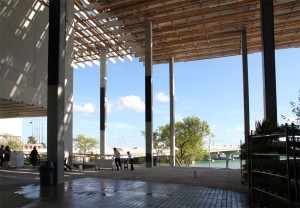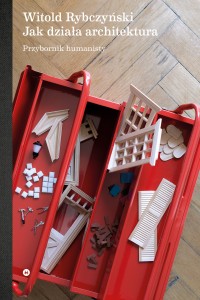MIAMI NICE
 The Pérez Art Museum in Miami suits the city and it suits modern art. Can’t ask for more than that. My first glimpse of the museum, which opened in 2013, was from the MacArthur Causeway, which swoops across the water next to the museum. The hovering shade roof over a boxy building gave the impression of a Renzo Piano museum. But something was different, and the difference became clear when later that day we visited the building. As in a Piano building, the architecture is derived from the construction, but unlike Piano, Herzog and de Meuron don’t sweat the details.
The Pérez Art Museum in Miami suits the city and it suits modern art. Can’t ask for more than that. My first glimpse of the museum, which opened in 2013, was from the MacArthur Causeway, which swoops across the water next to the museum. The hovering shade roof over a boxy building gave the impression of a Renzo Piano museum. But something was different, and the difference became clear when later that day we visited the building. As in a Piano building, the architecture is derived from the construction, but unlike Piano, Herzog and de Meuron don’t sweat the details.






